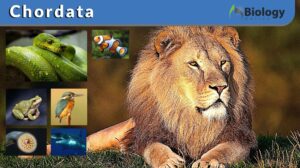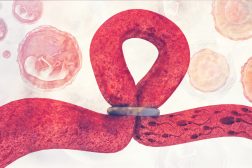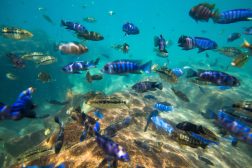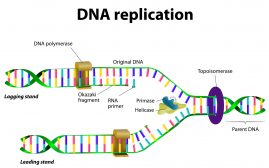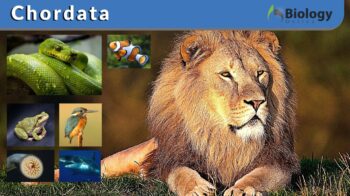
Chordata
n.
Definition: A phylum consisting of animals with notochord
Table of Contents
Chordata Definition
What is Chordata? Chordata is the phylum of the animal kingdom that includes a large number of animal species, including humans. Phylum Chordata animals include all animals that possess a notochord at least at one point in their lifetime.
A phylum is a taxonomy ranking that comes third after domain and kingdom in the hierarchy of the classification. The organisms belonging to a phylum share common characteristics that make them distinct from other organisms from another phylum. (Ref. 1) Chordata refers to a large phylum of animals that includes vertebrates as well as lancelets and sea squirts. Several well-known vertebrates, such as reptiles, fishes, mammals, and amphibians are included in the phylum Chordata.
What is a chordate?
The term “chordate” is used to refer to any animal belonging to the phylum Chordata. We can define chordate as follows: “The chordates are the class of animals that possess four anatomical features, namely (1) notochord, (2) dorsal nerve cord, (3) post-anal tail, and (4) pharyngeal slits, at least during some part of their development into maturity.”
Discover more about Phylum Chordata. Join us and participate in our Forum discussion: What is phylum chordata?
Are all chordates vertebrates? How are chordates and vertebrates related? All vertebrates are regarded as chordates. However, not all chordates are vertebrates.
Vertebrates, being a chordate, have a post-anal tail, a notochord, pharyngeal slits, and a dorsal hollow nerve cord. However, their notochord develops into a spine, which is a column of bony vertebrae separated by discs. Other general features of chordates that are present in vertebrates are as follows:
- Bilateral symmetry
- Segmented body
- A fully developed coelom
- A large anterior brain end with a hollow dorsal single nerve cord
- The projection of tail far beyond the anus at any development stage
- The existence of pharyngeal pouches
- A ventral heart
- A closed blood system
- Ventral and dorsal blood vessels
- The availability of a complete digestive system
- The presence of cartilaginous and bony endoskeleton systems
Pandas, crows, sharks, salamanders, alligators, sea squirts, and many others are examples of chordates. So, in essence, to answer the question, amphibians, reptiles, and mammals comprise which group? — the answer is simply they belong to the phylum Chordata. And how about humans… Are humans chordates? Yes, humans are also chordates. At one point, the human embryo forms a notochord, which eventually becomes a vertebral column, particularly when the embryo is growing into a fetus. As already mentioned, any animal that has a notochord at any point in its life is considered a chordate.
Characteristics of Chordates
Animals belonging to this phylum share four key features: a notochord, a dorsal hollow nerve cord, pharyngeal slits, and a post-anal tail. Let us read more about each one below.
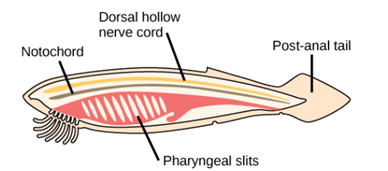
Notochord
What is a notochord? The notochord is a flexible rod that is lies along the anteroposterior axis (i.e. from top to bottom) of the body of the organisms. It lies dorsal to the gut and ventral to the central nervous system of the body.

The notochord is, in fact, where the chordates derived their name. This flexible and rod-shaped structure may appear at some stage during chordate development or may persist through adulthood. The chordates that have a notochord persisting in their entire lifetime use it as skeletal support. In other chordates, such as vertebrates, the notochord is replaced with a vertebral column (spine) past the embryonic stage.
The notochord lies in between the nerve code and the digestive tube. It is primarily involved in signaling and, in vertebrates, it also has a key role in coordinating growth and development. In particular, the vertebrate notochord induces neural tube development. The developmental process is referred to as notogenesis.
The dorsal hollow nerve cord
The dorsal hollow nerve cord is a hollow tube derived from the ectoderm during the embryonic stage of vertebrates. It lies dorsal to the notochord. Thus, it may be seen at the top of the notochord in chordates. This tube is made up of the nerve fibers that ultimately develop into the central nervous system where the brain and the spinal cord are the main constituents. The dorsal hollow nerve cord is protected by the vertebral column.
The nerve cord, though, is not an exclusive feature of chordates. It is also present in other animal phyla. In other animals, it is located either ventral or laterally as opposed to that of chordates that lie dorsal to the notochord.
Pharyngeal slit
The openings in the pharynx, i.e. the region below the mouth (or oral cavity) and extends to the outside (environment) are called the pharyngeal slits. These slits are used by invertebrate chordates for filter feeding. Water enters into the mouth, filtering food particles as the water exits through the pharyngeal slits. In aquatic vertebrates, such as fish, the pharyngeal slits are eventually transformed into gill supports or into jaw supports (as in jawed fishes). As for other vertebrates, such as mammals and birds, the pharyngeal slits are present at the embryonic stage and then integrate as parts of the ear and tonsils.
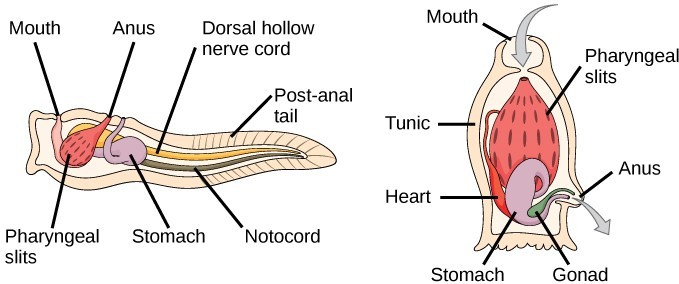
Post-anal tail
The posterior elongation of the body that extends beyond the anus is called the post-anal tail. In aquatic chordates, the post-anal tail has skeletal elements and muscles and therefore is essential to the organism’s locomotion in the aquatic habitat. Locomotion, by definition, refers to the capacity of an organism to move from one place to another. Running, swimming, jumping, flying, and hopping are some of the examples of locomotion seen in animals. In this regard, the post-anal tail plays a significant role in enabling the locomotion of fishes, for instance. In terrestrial chordates, the tail is used for balance and signaling. In humans and apes, this tail is vestigial, meaning it can be found during embryonic development but reduces in size or becomes vestige at birth. (Ref. 2)
Hope this helps you so far! And we’d be happy to help more! Have a question about chordates? Ask our Expert in this Forum: What is phylum chordata?
Reproduction and Life Cycle
The whole new and diverse class of vertebrates with a vertebral column, tunicates, and lancelets are represented by the phylum Chordata. Two strategies are used for sexual reproduction: (1) internal fertilization and (2) external fertilization. In the process of internal fertilization, the sperm and the eggs (collectively known as the gametes) unite within the body. In external fertilization, the sperm fertilizes the egg outside the body, and therefore, this type of fertilization is only limited to aquatic organisms.
In the subphylum Cephalochordata, there are many small species of lancelets that are very small fish-like creatures that possess a nerve cord that is supported by the notochord instead of a spine. During the mating season, the males and females produce sperms and eggs respectively that are released simultaneously for fertilization. During the spawning, the gametes are flushed in the water by the eventual rupture of the gonads. In the subphyla Urochordata and Vertebrata, the reproduction may be sexual or asexual.
In fish, the process of reproduction occurs through external fertilization in which a large number of gametes are released by males and females to ensure successful reproduction. Similarly, amphibians reproduce through external fertilization. The male and female usually meet on the breeding ground (a pond or well of the leaf). Females deposit a number of eggs and males deposit a number of sperms. (Ref. 3)
In figure 4, a diagram depicting the life cycle of various chordates is shown.
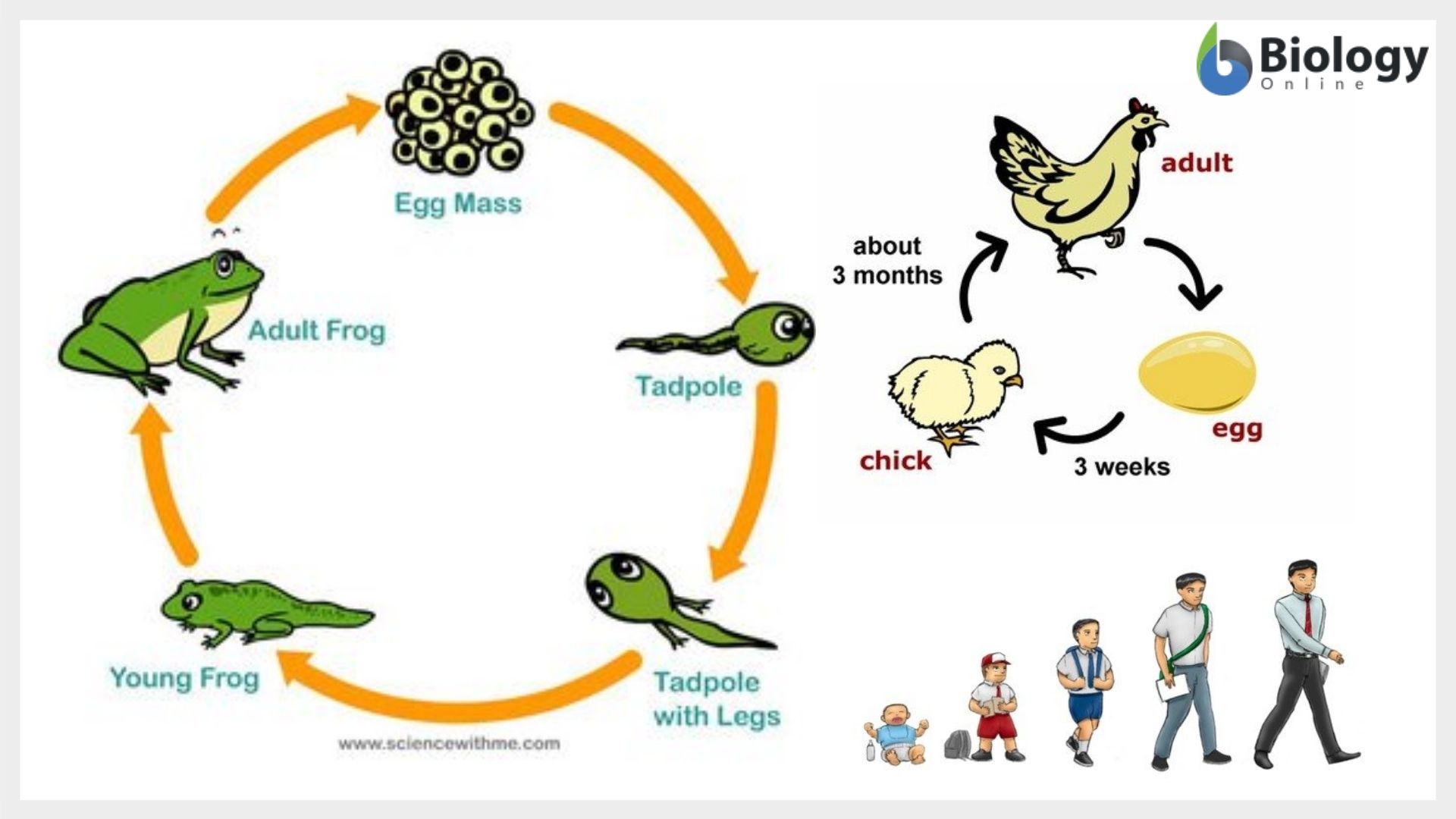
Evolutionary History
In evolutionary history, the fossil records of the chordates can easily be found around 530 million years ago in the early period of Cambrian when the fossils of the jawless fish appeared. The oldest fossil of the family of Chordata was explored in 1995 in China and was placed in the species of Yunnanozoon lividum.
Extensive research has been done on the evolution of the chordates, and thus, the researchers believed that the earliest fossils of the tetrapod, mammals, and birds were found approximately 363, 80, and 208 million years ago.
The basic reason behind the evolution of the chordates is the major changes that occur in the habitat and the earliest chordates that are reported in the literature were all the aquatic animals such as tunicates and lancelets. Thus, with their progressions and evolutions, they first moved to freshwater ponds and then finally towards land.
The intermediate phase in which the chordates moved to land from water is shown by many species of amphibians that still prefer to live in both land and aquatic habitats. Additionally, the expansion of the aerial population in the birds also brought a wide range of diversities in the phylum of chordates.
The researchers have thoroughly investigated the evolutionary history of chordates and have presented four major scenarios. Paedomorphosis hypothesis, Inversion hypothesis, Aboral-dorsalization hypothesis, and the Auricularia hypothesis are among those four hypotheses developed. The first hypothesis debated on whether the ancestors of the chordates were free-living or were sensible. Similarly, the remaining three models enlightened the biology behind the evolutionary development of the chordates and how they originated from a common ancestor. Thus, it is concluded that all four models are connected and supporting arguments in each of them sometimes may overlap. (Ref. 4)
Phylogeny of Chordates
There are three Chordata subphyla i.e. Urochordata (Tunicata), Cephalochordata, and Vertebrata (Craniata). The salient features on which all of these three classes have been categorized are the notochord, nerve cord, branchial slits, endostyle, postanal tail, and a myotome. Chordata has been placed in the super phyletic Deuterostomia along with the phylum Hemichordata and Echinodermata.
The common ancestor from which the chordates have evolved are deuterostomes. Thus, the majority of the scientists believe that among all the three phyla of chordates, the first one that evolved was the Urochordata followed by Cephalochordata and lastly Vertebrata.
The term protochordate has been extensively used in the phylogeny of chordates. The detailed analysis of the traditional reviews on the phylogeny of chordates has been elaborated on in Figure 5. On the other hand, there are many questions that often come to the minds of readers regarding the evolution of the chordates and it has been seen that a reasonable answer to all of such queries can easily be given via molecular phylogeny.
The broader classification in this field of science has allowed the researchers to reclassify the metazoan groups on the phylum level. Protostomes and deuterostomes were the traditional categories in which the Bilaterians and tripoblasts were placed.
The protostomes were divided into acoelomates, Platyhelminthes, and pseudocoelomates based on the modes of various formations in the cavity of the body.
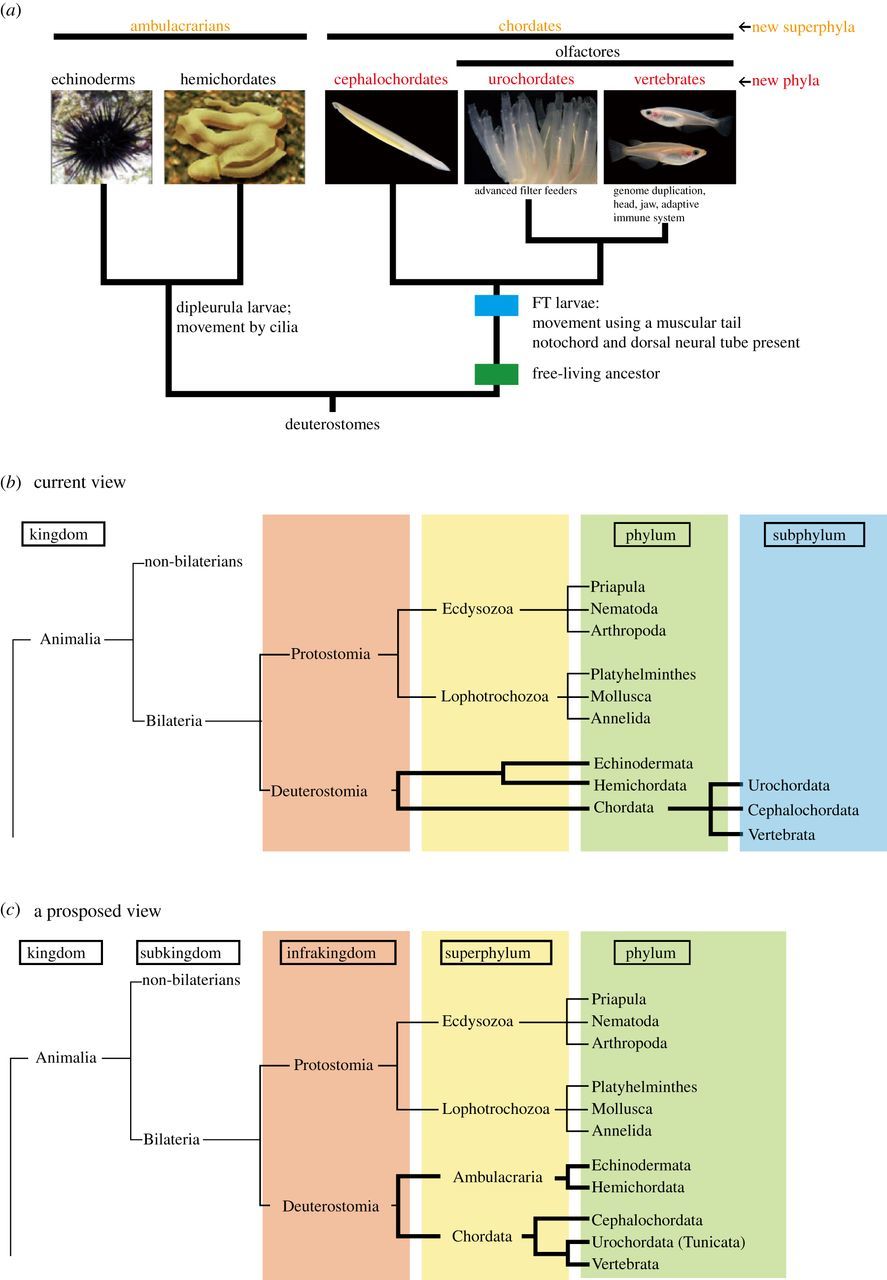
The said categories were not actively supported by the molecular phylogeny rather on the basis of the DNA sequences and the gene sequences of the protein-coding. The protostomes were again divided into two major groups as Lophotrochozoa and Ecdysozoa. A clade has been formed by the echinoderms and hemichordates. Another one is formed by the urochordates, vertebrates, and cephalochordates. This has been confirmed by the findings via molecular phylogeny, mitochondrial and nuclear biology. Thus, it has been concluded that the former clade represents the Ambulacraria and the latter one shows the Chordata phylum. Additionally, in Chordata, cephalochordates emerged first and the remaining two groups urochordates and vertebrates form a sister class. The recent view on the phylogeny of chordates has been shown also in Figure 5.
Chordata Classes
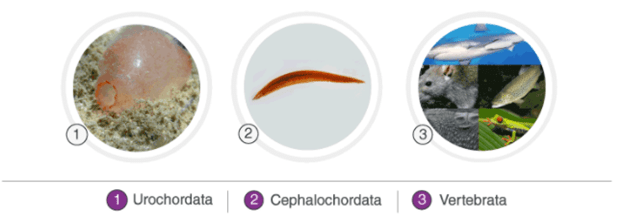
Phylum Chordata has three subphyla: (1) Urochordata, (2) Cephalochordata, and (3) Vertebrata, as depicted in Figure 6. There are very few species that belong in Cephalochordata and Urochordata.
Most chordates belong in the subphylum Vertebrata (vertebrates), e.g. fishes, animals, birds, and reptiles that form backbones made up of cartilage and bone and a brain enclosed in a hard skull. Approximately, there are fifty thousand species in this subphylum. They are ubiquitous. They are found in various habitats, e.g. marine water, freshwater, and terrestrial.
Chordata has a very peculiar feature; they possess bodies bilaterally symmetric making them unique to other animal phyla. The chordates are a member of the deuterostomes. One of the characteristics of this group is the anus gets developed in the early embryonic stages before the mouth.
Vertebrates are further divided into many classes, such as fishes, birds, reptiles, amphibians, and mammals. Reptiles are vertebrates with scaly, water-resistant skins. They lay shelled eggs and breathe air. They are cold-blooded, which means that they are unable to withstand the cold weather and widely depend on the temperature of its surrounding to maintain normal body temperature. They usually have four limbs. Turtles, chameleons, crocodiles, and snakes are some of the most common examples of reptiles.
Another famous class of chordates is the amphibians. Their name “amphibian” refers to the capacity to live on both land and aquatic habitats. They are born in water, possess tails and gills, which with the passage of time as they grow into adults, develop lungs and legs, enabling them to live on land. The common feature between reptiles and amphibians is that both of them are cold-blooded animals. Frogs, newts, blindworms, salamanders, caecilians, and toads are common species found in this class.
In class Chondrichthyes (cartilaginous fish), their skeleton consists of cartilage. They have an upward curving and asymmetrical tail. On the body of Chondrichthyes, there are five to seven various gills and the cycle of reproduction is achieved via modified fins that pass the sperms to the females. Examples of class Chondrichthyes include rays, skates, sharks, and chimeras. The oldest known class of chordates, specifically, vertebrates, is the class Agnatha (jawless fish). Hagfish and lampreys are the two primary groups of Agnatha. Hagfishes are specialized scavengers whereas the lampreys are the parasites that attach to other fishes in order to get nourishment via suctions.
Class Mammalia consists of warm-blooded animals that produce milk in their bodies that they use to feed their babies. They maintain the same body temperature throughout their bodies and they have the ability to sustain body temperature in any environmental conditions. They have a larger brain than the other vertebrates. Bears, camels, bats, dolphins, monkeys, and cheetahs are some of the most common animals that belong to the class of Mammalia. (Ref. 6)
READ: Mammalian Ancestors
The three sub-groups of Phylum Chordata have been named! Can you identify them? Connect with our Expert now! Join us in this Forum: What is phylum chordata?
Ecological Importance
The chordates play a very vital role in mantling an equilibrium in our ecosystem. The amphibians play a very significant role in wetland ecology by preying on the available insects and eating algae and dead plants that might fill the ponds and streams. Moreover, they are good indicators of environmental health. Similarly, the other available chordates are the main source of food for humans. Such chordates include fishes and many other animals that can be hunted. Additionally, there are many other mammals that live in our home as pets and assist us in many daily tasks. Thus, their functionality and impact on our ecosystems are very vast.
Chordata Examples
There are many common examples of Chordata as it is one of the many vast phyla presents in our ecosystem. Lamprey, for instance, is a vertebrate belonging to the subphylum Vertebrata. It is a jawless fish that can be found living on filter feeds and grown into an adult that possesses an oral disk covered with sharp teeth used to latch on to fishes (to obtain nourishment). Their body comprises gills used for breathing, a skeleton made up of cartilage, a notochord, and a nerve cord. A mucus-secreting organ is used to trap the food particles.

Another example of Chordata is sea squirts. They are tunicates whose body is barrel-shaped attached to a substrate. The adults of this species are filter feeders through specialized structures called siphons.

The chordates most of us are familiar with are the vertebrates, e.g. bears, camels, bats, dolphins, monkeys, cheetahs, frogs, newts, blindworms, salamanders, caecilians, and toads, among many others.
What’s your favorite chordate? We’ll be happy to hear your thoughts! Join and participate in our Forum now: What is phylum chordata?
Try to answer the quiz below to check what you have learned so far about chordata.
References
- Chordata (chordates). (2020). Animal Diversity Web. https://animaldiversity.org/accounts/Chordata/
- 29.1A: Characteristics of Chordata. (2018, July 16). Biology LibreTexts. https://bio.libretexts.org/Bookshelves/Introductory_and_General_Biology/Book%3A_General_Biology_(Boundless)/29%3A_Vertebrates/29.1%3A_Chordates/29.1A%3A_Characteristics_of_Chordata
- External Fertilization in Chordates. (2014). Sciencing. https://sciencing.com/external-fertilization-chordates-21619.html
- CK-12 Foundation. (2020). Welcome to CK-12 Foundation | CK-12 Foundation. CK-12 Foundation; CK-12 Foundation. https://www.ck12.org/book/ck-12-biology-advanced-concepts/section/16.3/
- Satoh, N., Rokhsar, D. and Nishikawa, T. (2014). Chordate evolution and the three-phylum system | Proceedings of the Royal Society B: Biological Sciences. Proceedings of the Royal Society B: Biological Sciences. https://royalsocietypublishing.org/doi/full/10.1098/rspb.2014.1729
- Roberts, C. (2018). Five Classes of Chordates. Sciencing. https://sciencing.com/five-classes-chordates-8145209.html
©BiologyOnline.com Content provided and moderated by Biology Online Editors.

